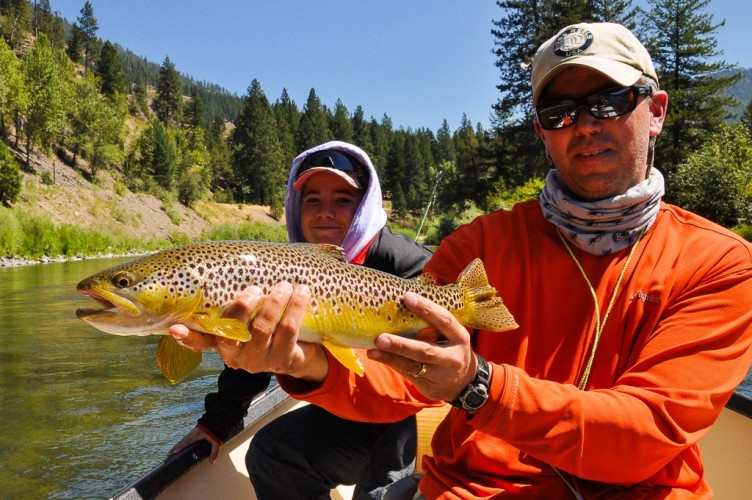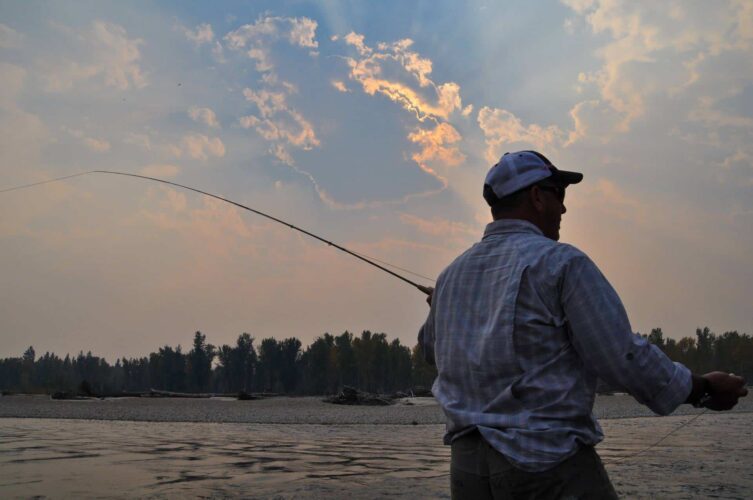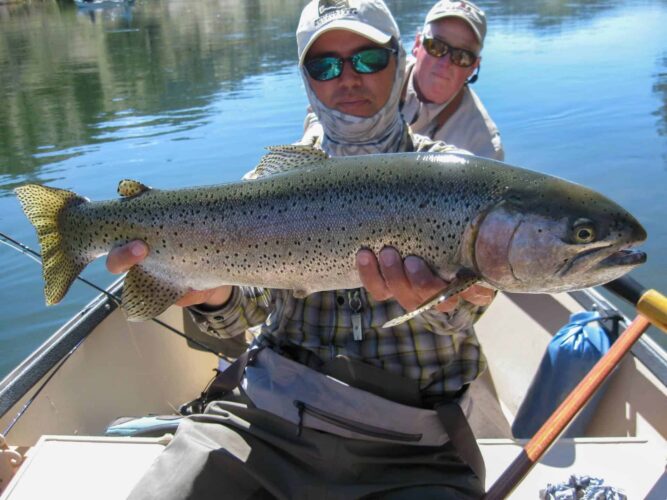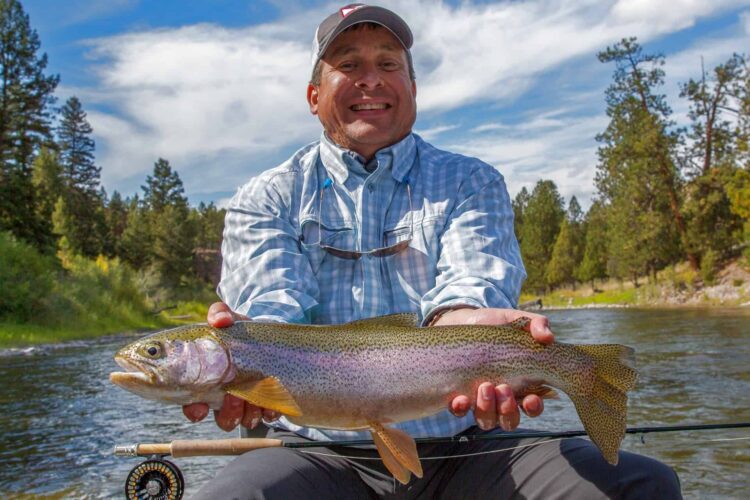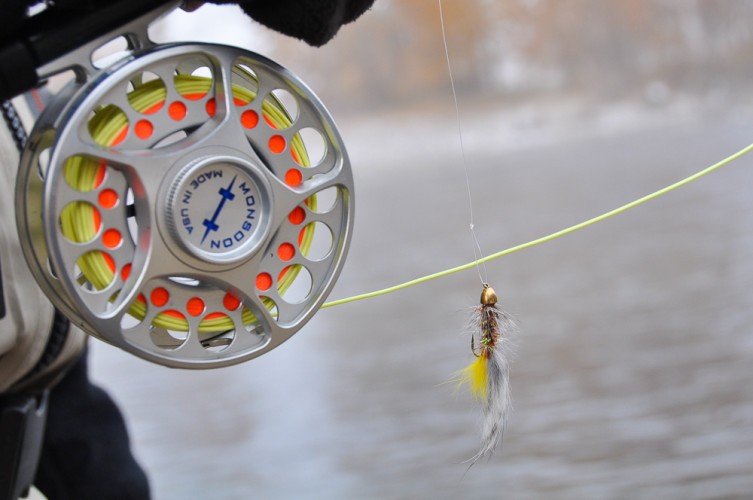
In the first two weeks of Drift Boat Fly Fishing Tips we talked about big picture concepts. Now it is time to get down to the nuts and bolts tactics that will make you a better fly angler for your next float trip. The first step is to be able to maintain a good Ready Position. Every river you fish will be different, on some you fire casts all day while others require that you pick your spots. Regardless, there will always be times during a float when you are not fishing.
The actions you take during that “down time” can have a big impact on your overall success during the day. After the first hour in the boat I have a good idea how long it takes my anglers to get ready to fish again. Some are faster than others, and I try to prep accordingly giving the slower anglers more lead time. When we do take a break some anglers simply plop their rod down with fly line strewn all over and flies surely wrapped around something. Those anglers are rarely ready when the time comes, but even diligent fly fishers get tripped up by situations that could easily be avoided.
A good Ready Position and some general awareness by the angler can ensure that their fly is in the water when it’s most important. For starters, you have to make sure that your rig is easy to get out of the boat and cast. That means you need to make sure to keep the leader out of the guides on the rod. The knots that form leader to fly line connections invariably get caught in the guides and make it more difficult to make the first few casts. Always leaving a couple feet of fly line out the end of the rod is a safe bet. Next is to make sure the flies don’t get tangled or hooked on anything. For a one fly rig this is fairly simple, just hold that fly by the bend of the hook. Don’t hold the leader above the fly becasue that allows tangles and snags. If you are fishing two flies such as a hopper dropper or nymph rig then the most effective technique is to hold the bottom fly, again by the bend of the hook. This keeps everything in a straight line but you need to make sure the top fly doesn’t snag anything.
Now that you have the fly line out the rod tip and secure hold of your flies you need to remain mindful of what you do with your fly rod. If you wave it all around or leave it pointed up at the sky then your leader is going to wrap around your rod. Try to keep your rod level with the river and don’t move it much at all. If you have to move your rod then do so in smooth motions.
The last thing to address is your excess fly line. Some folks like to reel up their excess fly line between spots. That is fine, but then they just have to pull it all back off the reel at the next run and it takes more time and effort than just leaving it out. The pitfall with leaving your fly line out is that it tends to get stepped on or wrapped around things in the drift boat or raft. So the last step in maintaining a good Ready Position is to actually look at your fly line and make sure you are not stepping on it or it’s not wrapped up.
This whole process is not that complicated and if you commit to it, you will gain precious time when your fly is on the water and not in a tangled mess. Next time you are drift boat fly fishing and the guide asks you to take a break start off by putting yourself in a good Ready Position. Then have a nice conversation, look at the scenery, or take a drink of water. When the guide calls on you to get ready simply go through a quick checklist: flyline out the tip, fly in hand, rod level and untangled, and fly line clear. It quickly becomes second nature, and you will catch more fish in the end!
